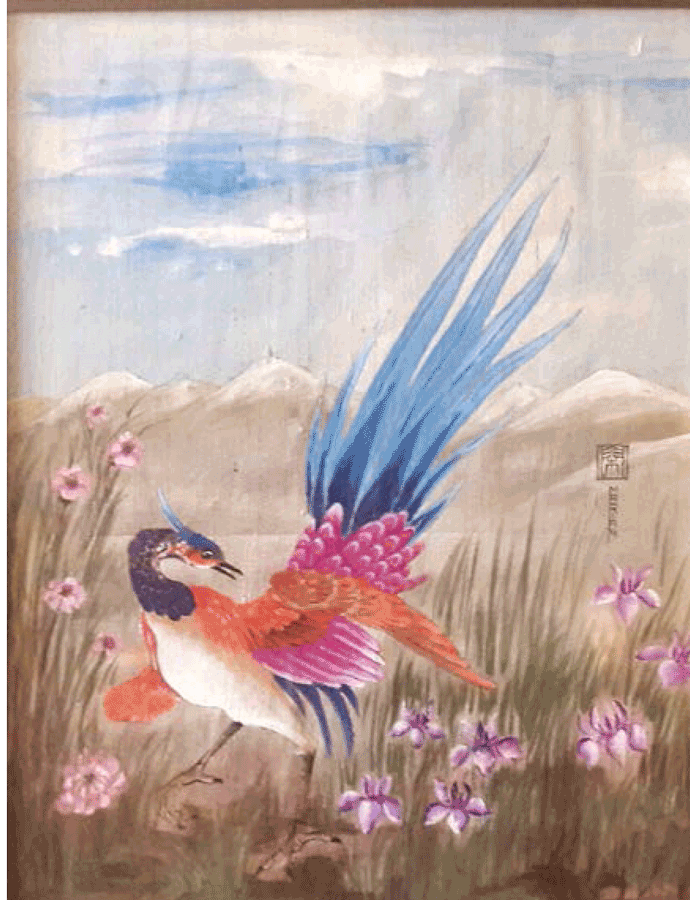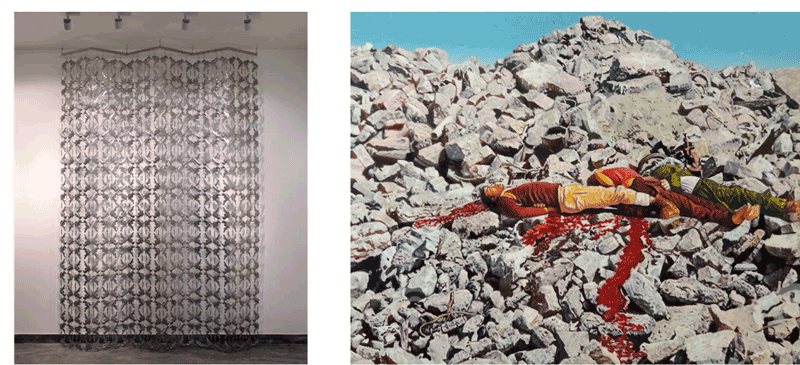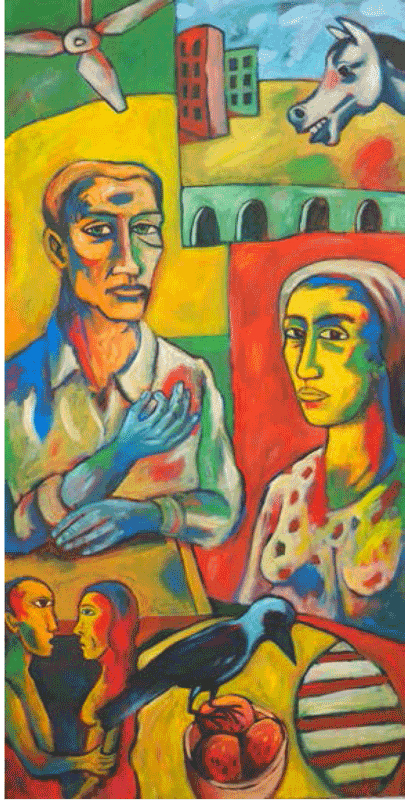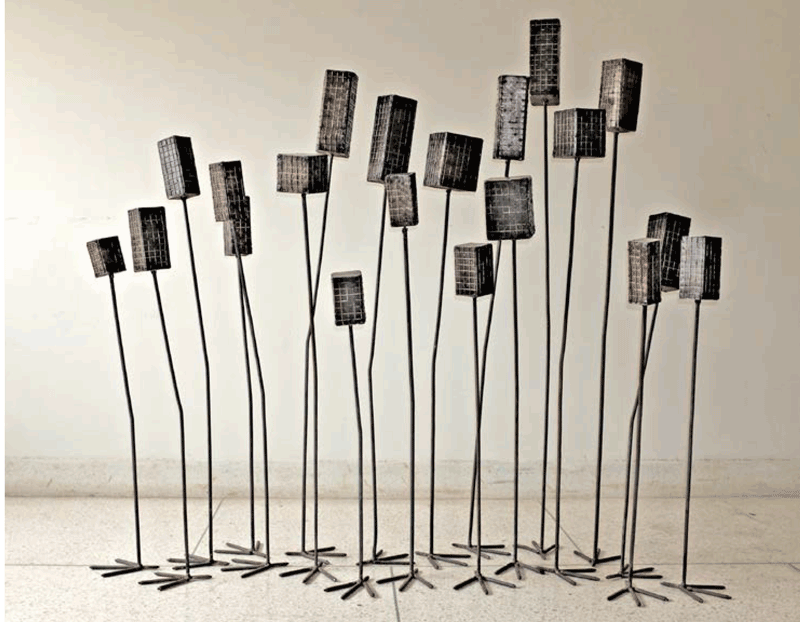One For the Birds
By Nusrat Khawaja | Art Line | Published 8 years ago

Marium Saeedullah: ‘Mythical Bird II ’
Koel Gallery has relocated to new premises, adjacent to its old venue, which is characterised by the dappled light and shadow of frangipani and pisonia trees. The custom-remodelled building allows for a generous sprawl of artwork through the free-flowing space created by the recession of rooms without doors.
The expansion of this iconic gallery reassures that there is sustainability in the art venture. By contrast, and on a much wider spectrum, the effects of environment change have alarming implications for sustainability. Environmental degradation and its effect on birds is what Koel Gallery has chosen to highlight in its inaugural exhibition in the new building.

Adeela Suleman: ‘I am no bird’
The 19-person show titled We Ate the Birds has been curated by Seher Naveed. The curatorial statement states that the exhibition, “aims to draw attention to the connection between our environment and urban planning through understanding the importance of birds and bird conservation.”
The title is a quotation from Margaret Atwood’s collection of experimental short stories/essays and drawings in ‘The Tent.’ Her haunting line: “We’re ankle-deep in blood, and all because we ate the birds, we ate them a long time ago, when we still had the power to say no,” is a profound warning to the irreversible consequences of hubris.
Given the large number of artists participating in the show, a varied display of artwork sensitizes the viewer to our myriad interactions with birds.
Marium Saeedullah’s ‘Mythical Bird I and II,’ painted on silk, evoke a poetic landscape in which birds are symbols of the mysterious and the fantastic.
Rabia S Akhtar’s ‘Passengers I and II’ (gouache on wasli) speak of metaphysical journeys and worlds that lie beyond the realm of imagination.

Moeen Faruqi, Carpe Diem.
Art negotiates between the imagination and the unknown to make unseen truths visible. Adeela Suleman’s ‘I am no bird’ (oil paint on metal plate) recalls the fall of Icarus as bleeding bodies lie on a rocky cliff.
Jamil Dehlavi and Omer Wasim have both used HD videos in their displays. Wasim’s videos of birds on the coastline are embedded in construction rubble, and there is a poignant contrast between the elemental forces of nature and the soulless intrusion of building materials. To the artist, the birds are “carrying within them narratives of inevitable dislocation and change.”
Dehlavi’s 12-screen relay of a woman dreamwalking amidst wakes of vultures is titled ‘High Priests of Ahura Mazda.’ This video installation has been created from imagery in Dehlavi’s 1975 film ‘Towers of Silence.’ The high priests are the vultures who clean the flesh off corpses and purify them in a Zoroastrian funeral ritual which goes back thousands of years. Their habitat faces destruction and the possibility of their extinction is linked to the extinction of the ritual itself.

Seema Nusrat: ‘When Birds Collide’
In contrast to the association of birds with the dead is Moeen Faruqui’s oil-on-canvas titled ‘Carpe Diem,’ which draws the crow into the centre of daily life. Faruqi foregrounds the crow in a domestic setting as “a main player in the theatre of the absurd” to demonstrate its centrality and equality to humans.
Vera Rustomjee’s oil-on-wood paintings, ‘The Egret Next Door I and II,’ show interiors of homes which flow from one to the other. Unlike Moeen Faruqui’s interior with human and animal occupants, Rustomjee’s homes have been vacated by their human occupants. Her depiction is warmly nostalgic with wistful memories of her own family, among others, who have sold their homes and therefore condemned them to be torn down to make space for apartment buildings. She captures the grace of a vanishing lifestyle and has an egret move into the vacated rooms.

Veera Rustomji: ‘The Egret Next Door I’
Seema Nusrat’s whimsical metal work titled ‘When Birds Collide,’ is an assemblage of 20 free-standing pieces that show a stork’s leg with a quadrilateral shape atop it in place of the body. It highlights the challenges birds face when natural structures are replaced by concrete ones.
Margaret Atwood has written about the panoramic view that is accessible to birds with their natural ability to fly. She claims: “Birds have something to tell us again, and the truths are not comfortable ones.” In the show We Ate the Birds, the viewer is confronted with flights of artistic imagination expressed through varied media. It is a highly urbanised response to the curatorial brief. There is not a single depiction of a forested habitat where wildlife dwells. This raises an important question regarding the entrapment of the human imagination by the onslaught of urbanity. The artists have done their jobs well as chroniclers. Perhaps they now need to look beyond the partial panorama of their urbanised imagination to include the forest as well as the trees.


